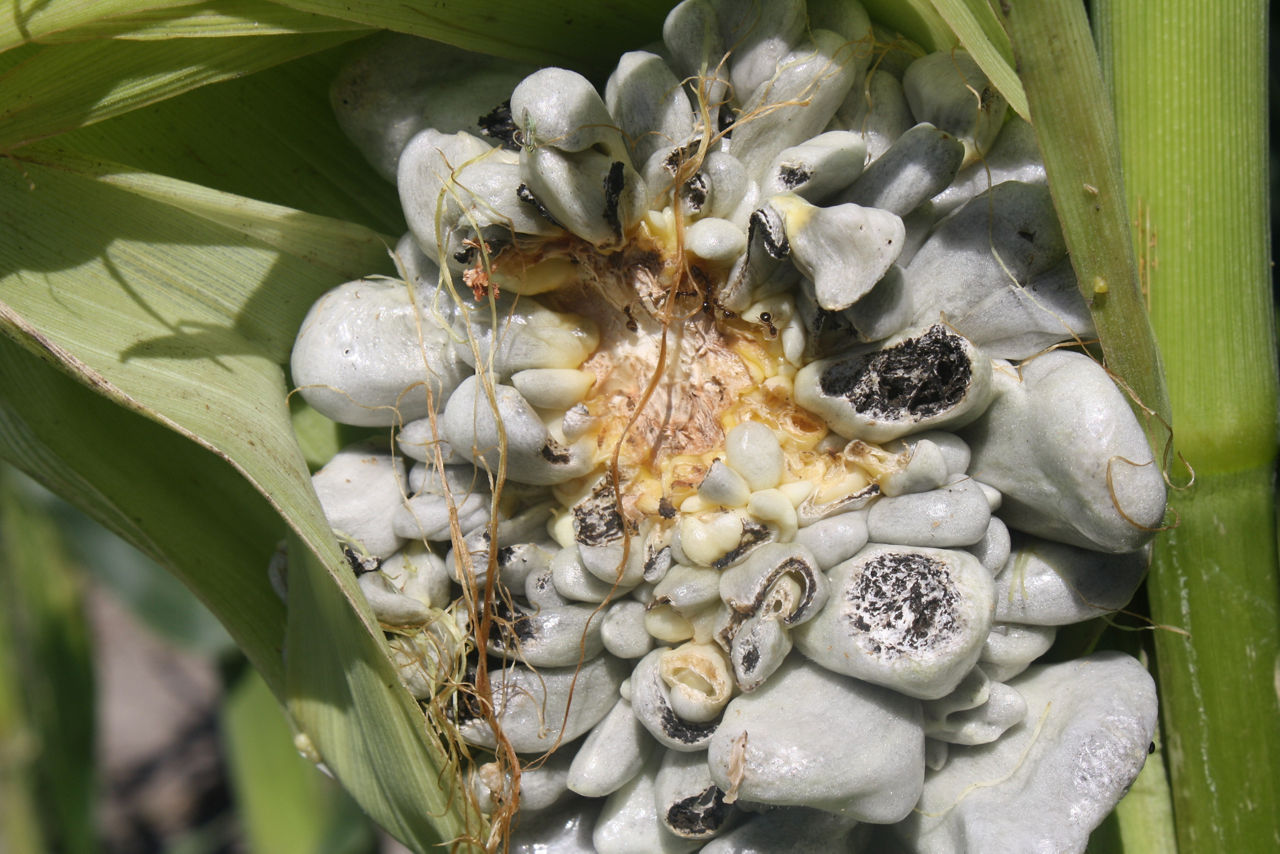Common Corn Smut
August 3, 2023
Common corn smut, caused by the fungus Mycosarcoma maydis (also known as Ustilago maydis and Ustilago zeae), is in most areas where corn is grown. Usually, it isn’t of great concern as it causes minimal economic losses, especially if it doesn’t appear until late season.
Symptomology of Common Smut
Common corn smut is easily identified by tumor-like galls that form on actively growing host tissues and contain masses of dark, sooty teliospores (Figure 1). The galls can appear anytime throughout the growing season on any above ground plant part.1

The galls are often seen on the ear of the corn plant, but may also be found on the leaves, stalks, or tassel. It is often found in fields with soils that have high levels of nitrogen and/or organic matter. Fungal infection often occurs through injuries incurred from high winds, hail, and mechanical damage from spraying or cultivation. Spray injury due to burn from chemicals or surfactants can also provide an entry point for common smut.
The spores are spread by wind or by water splashing onto young plants. Manure from animals that have eaten infected corn can also carry spores. Infections are more common in years with warm and wet weather.
Management of Infected Fields and Plants
After infection and formation of galls, there is no treatment for common corn smut. To help avoid future problems with common corn smut, crop rotation, balanced soil fertility, and avoidance of crop injury are means of reducing potential infection.
Andrew Sikora
Agronomist
Sources:
Malvick, D. 2018. Common smut on corn. University of Minnesota Extension. https://extension.umn.edu/corn-pest-management/common-smut-corn#:~:text=This%20disease%20can%20be%20managed%20with%20resistant%20hybrids%2C,maintaining%20proper%20soil%20fertility.%20Dean%20Malvick%2C%20Extension%20pathologist
Web source verified 6/19/23.
You may also like...
Here are some articles that may also be of interest to you
Seed Brands & Traits
Crop Protection
Disclaimer
Always read and follow pesticide label directions, insect resistance management requirements (where applicable), and grain marketing and all other stewardship practices.
©2024 Bayer Group. All rights reserved.